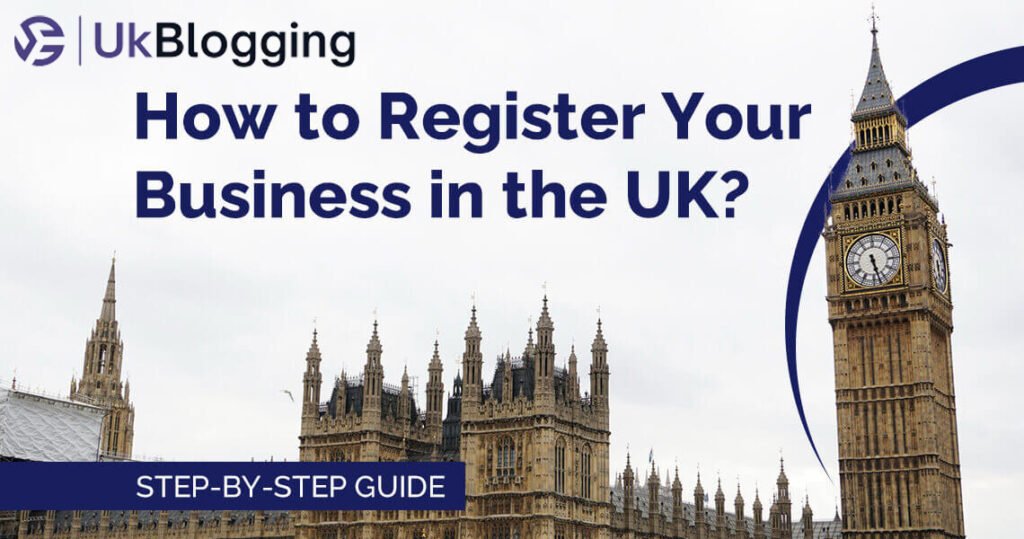Starting one’s own business can be quite exciting and rewarding but does entail a lot of planning and dedication, with some basic knowledge about the legal and financial frameworks that your business has to operate within. If setting up a small business in the UK is what is running in your mind, then this step-by-step guide will take you through the process and make your entrepreneurial journey a success.
First step: Research and Planning

It is very important to do thorough research and come up with a solid business plan before launching a business. A well-thought-out business plan serves as a roadmap for your business and helps to clearly state your goals, target market, competition, and financial projections.
Key Elements of a Business Plan:
Executive Summary:
This section entails an overview of one’s business and briefly summarizes the mission, vision, and objectives that lead to its conceptualization.
Business Description:
Describe in detail the products or services you will offer and how they solve a problem or meet a need within the marketplace.
Market Research:
It involves studying the target market, competition, and customers’ needs.
Marketing Strategy:
How you will reach your target audience and realize sales.
Financial Plan:
This is a description of the costs to start up, revenues projected, and funding needs for a startup.
Planning your business will give you a sense of its potential, what challenges you are likely to face, and how you can overcome these to achieve success.
Step 2: Determine Your Business Ownership Structure

Within the UK, there are a number of different legal structures that a small business can take, each with their various advantages and disadvantages. The one you decide upon will affect how much tax you pay, the amount of personal liability you have, and your administrative burden.
Common Business Structure in the UK:
Sole Trader:
The simplest form of business structure, where you, as an individual, own the business and are personally liable for the debts. It is ideal for smaller businesses with lesser risks where you retain all the profit but have a liability to pay income tax on it.
Limited company:
The company is kept separate from an owner or owners by law. That would imply business in itself does exist as a legal entity; there exists the possibility of limited liability, which tends to mean that you are not held personally responsible if the company falls into debt, although the converse may be that it requires a much larger volume of paperwork and administrative work, preparation, and presentation of annual accounts, and completion of returns regarding corporation tax, for example.
Partnership:
This is when two or more individuals together operate a business, with profits shared between the owners, including any liabilities. Each partner has unlimited personal liability in case any debts arise against the business. Partnerships are fairly easy to establish, but, just like sole traders, the partners have unlimited liability.
Limited Liability Partnership:
In the case of a limited liability partnership, the structure of ownership is such that partners hold limited liability, which makes them not be held liable in person for business debts. A limited liability partnership brings together the best of the concepts of partnerships and limited companies.
It is important to take your time and choose the right business structure for your long-term success.
Step 3: Register Your Business

Once you have identified the actual business structure to be given to your venture, you would want to carry out the formality in terms of the business registration process. Sole trader status involves simply registering with HMRC for self-assessment tax, while, in setting up a limited company, Companies House is the place where the registrar for UK companies registers and stores such information.
Steps for Registration:
Sole Trader:
You can register online with HMRC via their website at GOV.UK. This is fairly painless, and you’ll be given a UTR number for tax purposes.
Limited Company:
You need to register with Companies House, showing who the directors and shareholders are, the address of the registered office, choose a company name, and check that it is not already in use.
Partnership or LLP:
You do not have to register a partnership with Companies House, but you should draw up a formal partnership agreement that sets out the roles, responsibilities, and profit-sharing arrangements for each partner. However, you do have to register an LLP with Companies House.
In both cases, you have to make sure that your business is in compliance with UK laws and regulations and may be required to apply for certain licenses or permits depending on the nature of your business.
Step 4: Organize Your Finances

Proper financial management will break or make your business. You open a bank account for business purposes in order to keep your finances separate from that of the company. Being a sole trader, operating through a personal bank account is appropriate, but for easier tracking and tax reporting, it would be better if you opened another bank account.
Things to consider:
Business Bank Account:
Try to find one that has lower fees, includes online banking capabilities, and has good customer service. A business account will be a necessity if you’ve decided to be a limited company.
Accountancy software:
Invest in some sort of accountancy software where you’ll be able to keep record-keeping, documenting your coming in and outlay. Several known ones around the UK include QuickBooks, Xero, and FreeAgent.
Hire an Accountant:
Even though small businesses can perform all the functions themselves relating to finance, it is worth investing in an accountant to assist with filing taxes, payroll, and financial planning.
Bookkeeping:
Record accurately with details of the transactions in respect to sales, expenses, invoicing, and receipts. It saves so much headache later on at tax time.
Proper financial management will keep your business compliant with the tax laws and set it up for long-term profitability.
Step 5: Licensing and Permits

Some types of businesses, due to their very nature, will fall into further regulation and require additional licenses or permits to operate in the UK. Food service providers, healthcare, and construction industries are among many that have further licenses.
For instance:
Food Businesses
Food businesses, from food retailers to restaurants, must register their food business with the local council at least 28 days before opening. You will be required to adhere to food standards and may well be inspected to ensure you maintain appropriate food hygiene practices.
Construction Businesses:
If you are in the construction industry, then you may need to consider registration under the construction industry scheme.
Financial Services:
This would apply if your business provides any type of financial advice or services. You would have to be registered with the Financial Conduct Authority.
Check with local councils, industry regulators, and trade associations to find out what permissions and licenses are required.
Step 6: Insurance Setup

Types of Business Insurance:
Public Liability Insurance:
Insurance is vital for any business and covers one from any unforeseen event that might impact the work or business due to a monetary loss. Being an owner of a small enterprise in the UK, there are a number of variants of insurance that one might consider for a business.
This will cover your business against claims when somebody gets injured or property is damaged as a result of the business operation. This insurance cover becomes a high priority where face-to-face interaction occurs either with clients or customers.
Employers’ Liability Insurance:
This is legally necessary if you employ anyone. It pays out if you have an employee being injured or dying, or failing in health because of anything related to job duties.
Professional Indemnity Insurance:
This provides negligence or professions concern on professional advice or services.
Business Property Insurance:
This would cover any damage to or loss in your business properties, meaning everything that is kept in its buildings, from equipment to stock.
Product Liability Insurance:
This product liability insurance covers you in case there are claims arising from faulty products if your business manufactures or sells products.
While in the majority of cases it may not be legally required, insurance is highly recommended in order to protect your assets and your business.
Step 7: Market Your Business

It is crucial for marketing to reap customers and sales. You will need to devise some sort of marketing strategy that fits not only into the goals but also into the targeted audience.
Key Marketing Strategies:
Create a website:
The professional website is the essence of any online business; it should be easy to use and responsive, and it must include all the basic information like contact, services or products provided, blog, etc.
Social Media Marketing:
This would include Facebook, Instagram, Twitter, and LinkedIn. Engage your target audience on these platforms through updates, promotions, and relevant content to create brand awareness and trust.
Search Engine Optimization:
This is the optimization of your website for search, enabling you to rank on Google and drive organic traffic to your website.
Networking:
Attend local business events regularly; participate in various trade associations, and make your presence felt among your customers and partners in your industry.
Paid Advertising:
Run some paid ads on Google or social media for better visibility and generating leads.
Step 8: Launch and Grow Your Business

Once all is set, it’s time to unleash your business into the world. You can plan a launch event or some sort of promotion in order to gain buzz and attract the very first customers. Since then, the development will be continuous reassessment and correction of every strategy in order for you to get closer to perfection.
Growth Strategies:
Customer Feedback:
Obtain regular feedback from customers on how one can improve, either in offering your product or service.
Diversify/Expand Offerings:
Diversification or expansion of offerings should be done once you have established your business.
Invest in Employees:
Proper growth of a business involves hiring employees who can scale up the operations and also improve customer service.
Conclusion
Setting up a small business in the UK requires planning, adhering to the law, and thinking strategically. From research and registration down to marketing and growth, follow these steps to set up a successful and sustainable business. With commitment, flexibility, and learning on the go, you are good to go for success as an entrepreneur in the UK.
